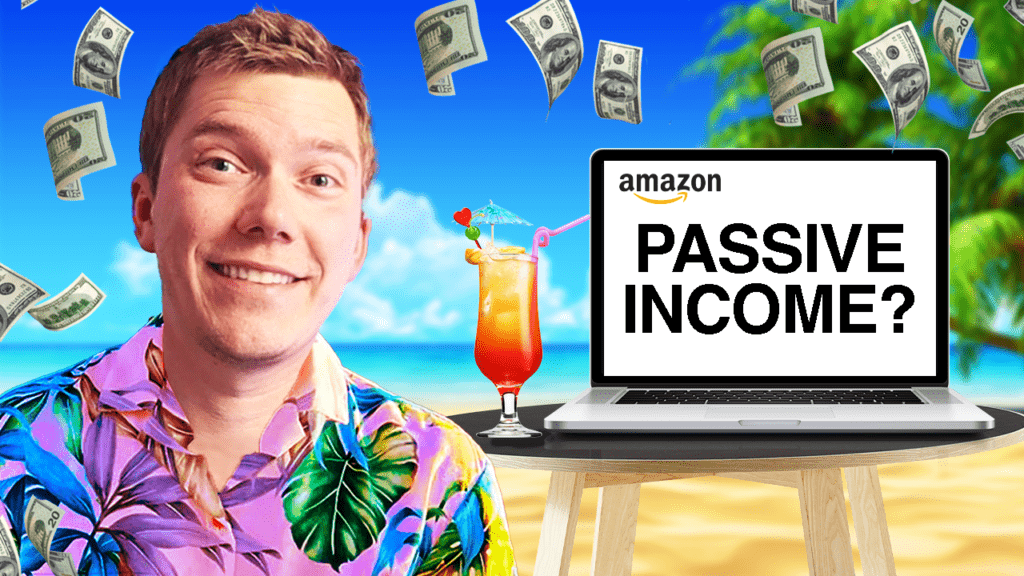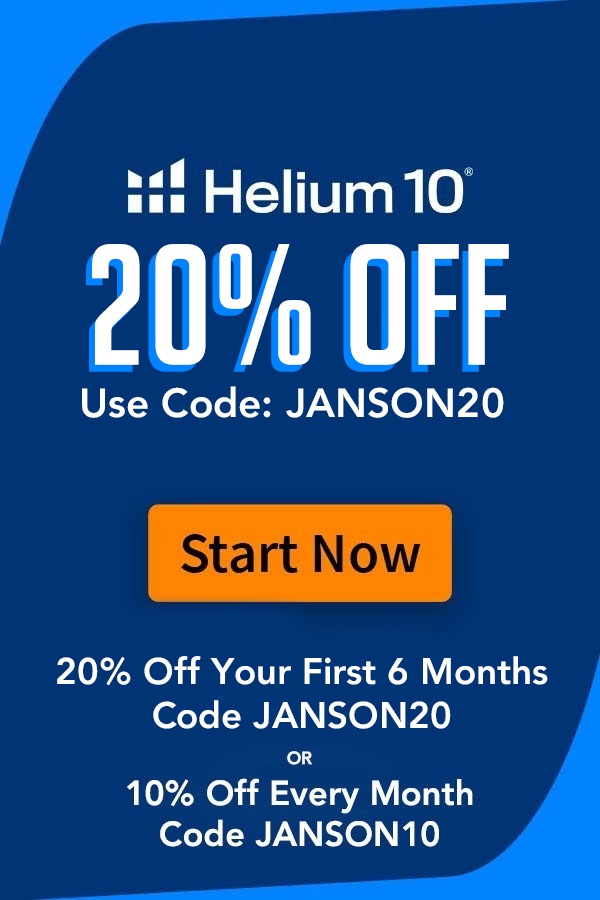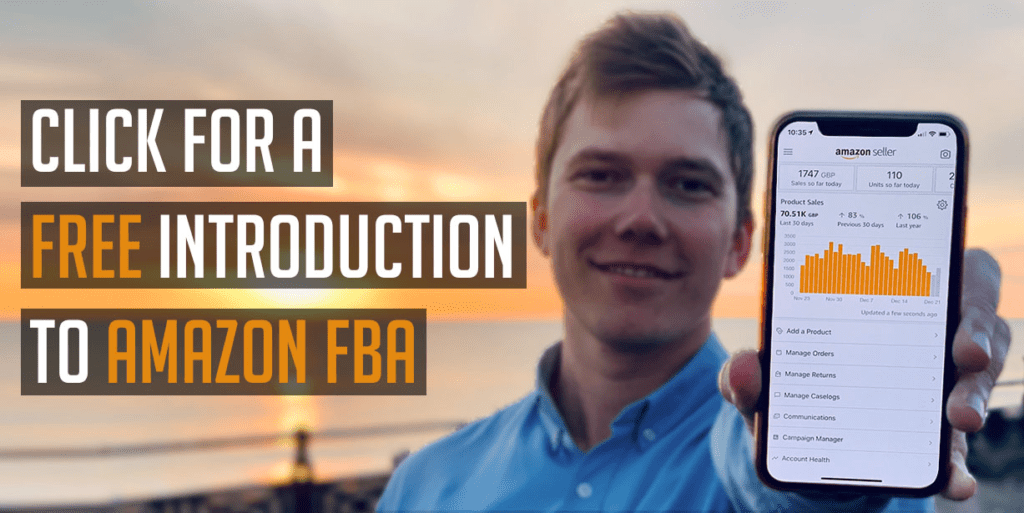
Amazon FBA is regularly touted as being a ‘passive income’ business model that allows you to earn while you sleep, and because of that, I get hundreds of emails every year from people wanting to know just how passive it really is, and whether it’s possible for them to start earning huge sums whilst they lounge around on the beach or focus on other things.
As somebody that actively runs a 7-figure business selling on Amazon, I know exactly how much work is required to get to that point, and just how passive this business model really is.
If you look up the definition of passive income, you’ll see it defined as being “Unearned income that is acquired automatically with minimal labor to earn or maintain – a passive income business can take a long period of work before income can be earned. It can be a way of creating financial independence and early retirement because the beneficiary will receive an income regardless of whether they are materially active”.
Just how accurate is this definition when it comes to describing an Amazon FBA business? Well, let’s talk about my experience to date, how many hours I’ve put in, and based on that, whether I ultimately think it can be described as a passive income-generating business.

Starting My Amazon FBA Business
I started my Amazon FBA journey back in early 2018, and after doing product research for roughly 1 to 2 hours a day for 6 weeks, I settled on a product that I wanted to sell. While searching for a product got pretty boring at times, the good thing was that I was able to do it in my spare time in the evening and at weekends. This part of the process didn’t require me to give up on work or miss out on social activities with friends and family.
Once I’d found the product that I wanted to sell, I then had to dedicate time to sourcing a supplier, which while not a time-consuming activity to do, did require me to get up early in the mornings given that China is 8 hours ahead of the UK, and if I left the messaging too late in the day, I wouldn’t be able to have a conversation and make any progress with negotiating or finding out more about the product. While this part of the process didn’t take much time at all, it did require me to amend my sleeping habits slightly so that I could find and work with the best supplier.
The remaining parts of the process that were left before I started selling, involved creating a brand, putting together my amazon listing, and arranging shipment with a shipping agent, which were all activities that I was able to do in the evenings or at weekends, without having to miss out on any social events or needing to think about quitting work.
During the initial stages of setting up my Amazon FBA business, I’d estimate that I “worked” an average of 60 minutes a day for around 8 weeks, with the most time-consuming activity during that period being product research and deciding on what it was that I wanted to sell. Once I’d determined that, found a supplier, and created my Amazon listing, the amount of time spent on the business fell to almost zero, which was because my product was being manufactured and shipped.
Once my product eventually arrived at Amazon and I was able to start selling, the amount of time that I spent on the business grew to around 4 to 5 hours a week on average, with the most time-consuming activity relating to Amazon advertising tasks, where I’d be reviewing ad campaigns and amending them in order to make an attempt to increase levels of profitability. Other activities that I’d have to dedicate time to included answering customer questions, checking stock levels, and reordering with my supplier, but all of these tasks could be completed on my phone during my commute to work and so didn’t require much of my time at all.
Growing My Amazon FBA Business For More Profit
For my first 6 months of selling with Amazon FBA, I continued to spend an average of 4 hours a week on the business, doing the same type of tasks pretty much every week – checking and optimizing advertising campaigns, replying to customer questions, and re-ordering stock if necessary.
After this initial 6-month period of selling, I realized that selling on Amazon was actually a lot of fun, and I realized that instead of viewing Amazon FBA as an opportunity to sell 1 or 2 products that gave me a bit of extra pocket money per month, I should be viewing it as an opportunity to create a global brand that generated profits each month from product sales and also grew in value and one day could be sold to an investor.

Following the realization that I wanted to create an Amazon FBA business that was a valuable business asset, the amount of time that I devoted to the business increased to roughly 10 hours a week, with the majority of this time spent researching additional product opportunities, and continuing to refine and improve upon my existing branding.
Four years on and this 10-hour weekly time commitment to my Amazon FBA business has stayed more or less consistent despite the fact that the number of products that I sell has increased to around 25 and the annual profits that I generate increasing from 4 to 6 figures. This has in part been helped by the fact that I’ve outsourced my Amazon advertising to a freelancer and that in addition to using Amazon to fulfill orders on my behalf, I use whatever tools are available to automate tasks such as responding to customer questions, requesting reviews, calculating profitability, and so on.
Since I first decided that I wanted to sell products with Amazon FBA in 2018, I’ve spent a lot of time working on the business, with most of the hours that I’ve done being focused on finding products to sell, or product research. This is why answering whether Amazon FBA is passive or not is not a straightforward one because the right answer is going to come down to the goals of the person asking.
Planning Long-Term Goals For My Amazon FBA Business
If your goal is to create a brand on Amazon that can one day be sold to an investor, then it’s unlikely that you’ll be able to sell a single product that receives very limited attention from you and soon becomes worth millions. To do that, you’re going to need to enjoy spending time working on growing your business, and in my experience, this is going to be at least 10 hours of work per week.
However, if your goal is to simply sell a product that generates you a couple of thousand in profits each month, to help you pay your bills or reduce your hours at work, and so on, then the time that will be required from you will be substantially less, likely around 2 to 4 hours per week.
Regardless of your goals or how many products you have, I don’t think it’s fair to say that Amazon FBA is a completely passive business model because it’s never going to reach a point where you dedicate no time to the business at all. With that said though, I think it’s one of the most ‘passive’ business opportunities out there, and if we flip back to the definition of passive income, we can see that in parts it does describe Amazon FBA quite well, which is that much of the work is done upfront, and it can be a way of creating financial independence:
Unearned income that is acquired automatically with minimal labor to earn or maintain – a passive income business can take a long period of work before income can be earned. It can be a way of creating financial independence and early retirement because the beneficiary will receive an income regardless of whether they are materially active”.
If you’re looking for a business opportunity that requires zero work at all and just prints money, you might want to reset your expectations because you’re going to be looking forever. However, if you want a business opportunity that offers the flexibility to be run in as little as 4 hours, depending on your goals, then Amazon FBA is the one for you. It’s not completely passive, but it is a business that can be run in your spare time if you still work. It’ll teach you a tonne of new business skills, and it is a huge amount of fun. What could be better?
If you’ve enjoyed this article and want to learn more about Amazon FBA, check out my free intro training where I run through my exact 5 step strategy that I’ve repeatedly followed to continue launching successful products.
For more inspiration, read how I earned £30,000 in 3 months with just one Amazon FBA product.
If you want to learn how you can create an Amazon FBA business yourself, then check out my free training where I’ll teach you everything you need to launch your first product on Amazon and scale to $5,000+ in monthly profit.
Or if you’re ready to begin your journey and want to start with the best chances of success, apply to become a member of HonestFBA’s training programme where you’ll receive guidance & support from our team of 7-figure Amazon FBA seller experts whenever you need it.





